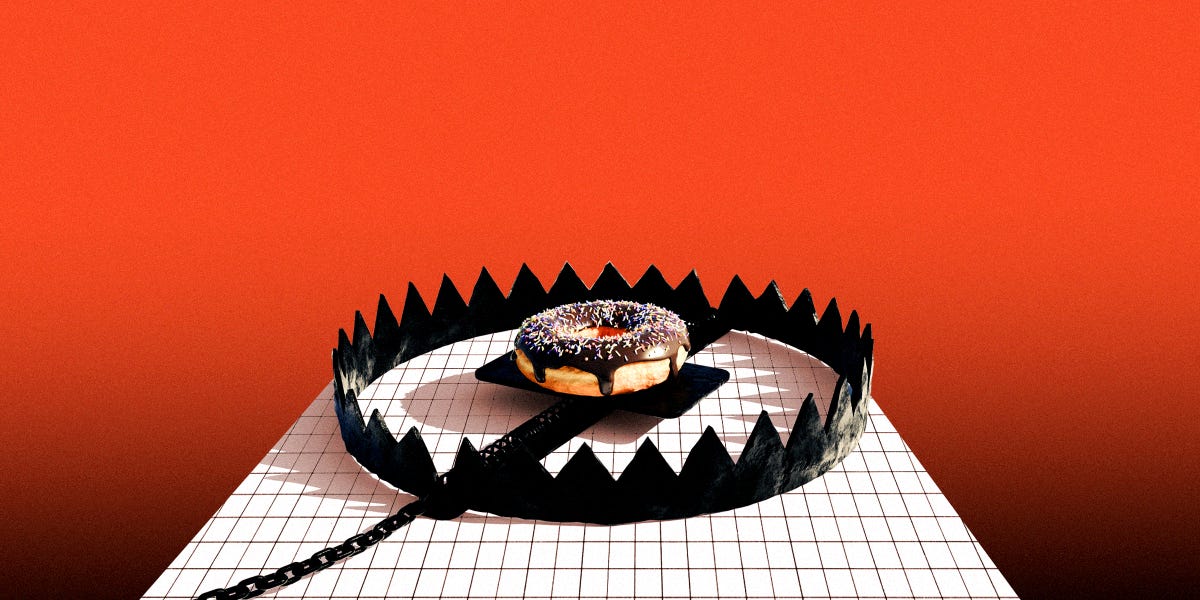
EATING CLEAN SOUNDS smart—in theory. Generally, the idea focuses on eating more whole foods and less ultra-processed foods. (Great!) But in practice, experts say that assigning labels to foods can be risky for your mental health. (Not so great.)
To step back, clean eating is a staple of the social media wellness universe, and about 11 percent of Americans now say they follow a clean eating diet. However, there are no standard definitions for “clean eating” or “clean foods.” Unlike USDA Organic, a food claim regulated by the U.S. Department of Agriculture, clean eating can be whatever you make it.
Here’s why that matters, for your physical—and mental—health.
What Is Clean Eating?
CLEAN EATING CAN mean many different things.
“Everybody has their own idea of what clean eating is, what it looks like, but I would say it’s mostly whole foods or minimally processed foods, a lot of plant foods, not a lot of ultra-processed foods, not a lot of alcohol,” says Abby Langer, RD, a Men’s Health nutrition advisor and the owner of Abby Langer Nutrition. (Some people conveniently forget the alcohol part, she says.) Some people also prioritize organic food as a pillar of clean eating.
Is Clean Eating Healthy?
IT CAN BE. Many foods often called “clean” (fruits, vegetables, whole grains) are packed with beneficial nutrients, like vitamins, minerals, fiber, and antioxidants. Only 10 percent of Americans eat enough fruits and vegetables, so piling your plate with more produce is a smart strategy.
“I don’t think you’ll find a dietitian on the planet who does not recommend eating more plants, eating lots of fiber, decreasing alcohol, decreasing ultra-processed foods. All of that is amazing,” says Langer.
However, a focus on clean eating can easily slide into a harmful fixation.“It’s not amazing if it comes at the cost of your emotional or mental health, like orthorexia, or aiming for this illusion of perfection in nutrition and cycling through diet or not diet again and again and again,” she says.
“I discourage the use of morality-based labels, because they tend to become a person’s identity, like it or not, even subconsciously, like ‘I’m eating clean’ or ‘I’m not eating clean,’” says Langer.
What could happen: A person focused on eating “clean” may equate eating clean with being good. Then, if they eat something that is not clean, they feel dirty or bad. Worse yet, when they feel this way they might scrap their healthy eating plan altogether.
“Being consistent and having a healthy diet shouldn’t include morality-based labels, and it never includes perfection,” says Langer. “It does include all foods, it’s just the ratio in which those foods are eaten, like more whole foods, less Twinkies.”
Yes, healthy eating includes room for occasional treats.
“You can have a healthy diet and have a bowl of Fruit Loops,” she says.
It’s also possible to eat “clean” and still fall short of your daily nutritional needs, suggests a new study published in Current Developments in Nutrition. Researchers compared two standard American diets, one with ultra-processed foods and one without. Both were just OK nutritionally, and the “clean” version cost $6 more per person per day and expired faster.
Cost is an important consideration. When discussing clean food, we need to talk about access, says Dezi Abeyta, RDN, a Men’s Health a nutrition adviser and founder of Foodtalk Nutrition LLC. Today, many people lack the money, transportation, or proximity to a grocery store to buy what they need.
“Let’s make sure that people have access to fresh foods and fruits and vegetables,” he says, before considering eating clean.
Is Clean Eating Safe?
“THEORETICALLY IT’S SAFE, but there’s absolutely no need whatsoever to put this kind of label on your food consumption or food choices,” says Langer. “You can reframe it in a less judgmental, morality-based way by just saying: ‘I’m trying to eat more fiber. I’m trying to eat more fruits and vegetables. I’m trying not to eat as much ultra-processed food.’”
As you cook, or as you plate your food, think about what you can add to increase the fiber or vegetable content of your meal, says Langer. (Frozen vegetables are often more nutritious than fresh ones, and they’re convenient as a side or mixed into a recipe.)
Abeyta recommends piling half your plate with two or three different colors of fruits and vegetables. Then, fill one quarter with high-quality protein and the other quarter with high-quality carbs like beans, lentils, and grains, such as cereals and pastas.
If you try clean eating, watch for signs that it’s disrupting your life—like if you go to a social event and feel like none of the food is good enough for you.
“It’s harmful when someone becomes so focused on eating clean that it ripples out into every facet of their life, socially, emotionally, physically, financially, it’s a problem, and we see that a lot,” says Langer.
Consult with a registered dietitian for nutrition advice tailored to your individual goals. (It’s easier than ever to tap their expertise through telehealth.)
